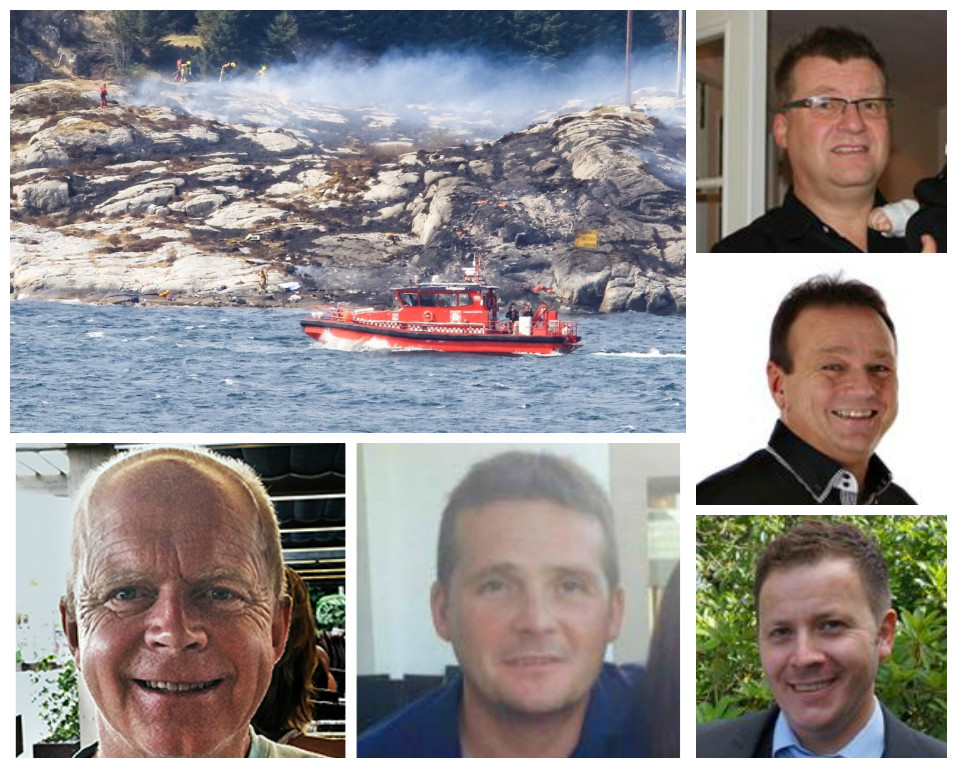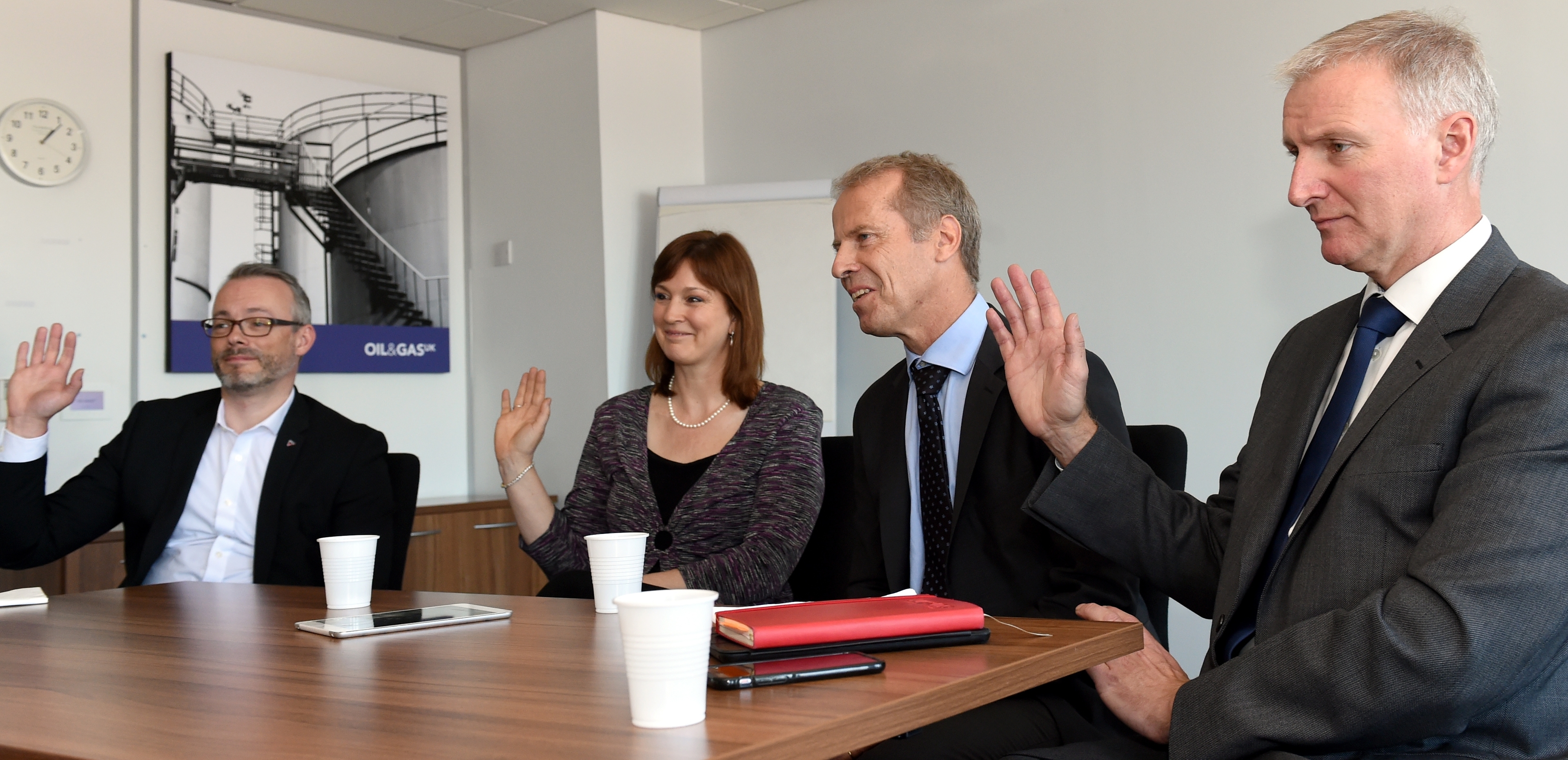
Investigators probing a fatal helicopter crash have issued an urgent request to the European Aviation Safety Agency (EASA) to deem whether the H225 helicopter should be immediately grounded.
The Accident Investigation Board Norway’s (AIBN) request comes after its preliminary report published yesterday detailed fatigue in the gearbox and a “catastrophic failure”, rendering early safety warnings “not effective”.
The (AIBN) is calling on the European Aviation Safety Agency (EASA) to take “immediate action” to ensure other Super Puma H225 helicopters are safe.
The board warns “the current means to detect a failure in advance are not effective”.
It came hours after safety aviation experts backed the H225s and said they would allow their children to fly in them – although they later backtracked to wait for the ruling.
The move could see the entire global fleet of the H225s sidelined, according to Step Change in Safety executive directer Les Linklater.
The aircraft’s offshore services are currently grounded in the UK after 13 people were killed off the coast of Norway last month when it crashed onto a small island and caught fire.
The H225 is currently being used in search and rescue operations.
But those flights could be forced to stop depending on EASA’s forthcoming ruling, according Linklater
He said: “This is no longer a UK issue. This is a global issue.”
The report read: “Detailed metallurgical examinations have been ongoing since 19 May. Several parts from the second stage epicyclic module were retrieved from the accident site. The epicyclic module planet gears are designed as a combined gear and bearing assembly.
“Planet gears have a double function, acting as a gear on the outside while at the same time functioning as the outer race of a roller bearing on the inside. In order to improve wear resistance it has been given a hard outer surface through a carburization process.
“Among the recovered parts were two pieces which together form approximately half a second stage planet gear. Examinations of these parts have revealed features strongly consistent with fatigue. The fatigue appears to have its origin in the outer race of the bearing (inside of the gear), propagating towards the web of the gear teeth. There is sign of spalling in front of the fracture surface.”
The AIBN said it felt the “findings to be of such significance that it has decided to issue the following safety recommendation to ensure the continuing airworthiness of the Main Gear Box (MGB)”.
Catastrophic Failure
It added: “It cannot be ruled out that this signifies a possible safety issue that can affect other MGBs of the same type. The nature of the catastrophic failure of the LN-OJF main rotor system indicates that the current means to detect a failure in advance are not effective.”
Linklater stressed the various stakeholders would carry out a robust investigation across industry too get to the root cause.
He said: “I can’t say how long it’s going to take. There’s no doubt it’s going to be challenging. But in the context, proper tri-partide engagement, proper workforce engagement, proper regulator and engagement from Airbus, CHC and others, we actually we believe we can get through this to a better and safer outcome.”
Eleven passengers, including oil worker Iain Stuart from Laurencekirk, Aberdeenshire, and two crew members were killed after the aircraft crashed near the city of Bergen on April 29.
Earlier investigations found the helicopter was travelling at 2,000ft when the main rotor head suddenly detached from the body of the helicopter and it smashed into a tiny island and burst into flames. Investigators said the “sudden catastrophic failure” developed in one to two seconds.
Mr Stuart’s family have said they are “heartbroken” by the death of the 41-year-old father-of-two.
The 10 other passengers who died were Norwegian while helicopter operator CHC lost two pilots, a Norwegian and an Italian.
Safety Chiefs Forced to Reconsider
The report findings come just hours after Energy Voice exclusively sat down with four safety and aviation chiefs at the core of the investigation.
Gilles Bruniaux, vice president of aviation safety for Airbus Helicopters; Gretchen Haskins, chief executive of HeliOffshore; Duncan Trapp, vice president of safety and quality for CHC Helicopters and Les Linklater, the executive director of Step Change in Safety moved to assure offshore workers and their families that they were working to get to the “root cause” of the crash.
When originally asked to raise their hands if they would fly on the H225, all four did so.
When probed on whether they would allow their children to fly on the H225, all four leaders again raised their hands.
However, after the report was published the safety bosses said they would need to await the EASA’s ruling before answering the question.
The four later issued Energy Voice a statement, which read: “The group has confidence in the system and the process that operates when any aircraft is suspended from service.
“We note the preliminary report from the AIBN, published on 1 June. With regard to the H225, we await further information from EASA who, as the regulatory authority for aviation safety, is best placed to take appropriate action to ensure safe flight operations.”
However, they reemphasized it would only strengthen their resolve to provide the industry with answers.
Mr Trapp said: “We have children. We have partners. Our crews have children. Our crews have partners. We are not in the business of putting anyone whether it’s a crew member or a passenger in something we don’t believe is fully airworthy and fully safe.
“So when we get to the root cause of this accident and when we’ve satisfied ourselves that the root cause has been addressed, then everybody is supportive of getting the 225 back in the air in the same way we’ve done with every other type of aircraft like this.”
Mr Bruniaux added: “The 225 is flying today in the world. It is mainly in the oil and gas industry that the helicopter isn’t flying. We have convinced people outside the Norway and the UK that they can fly, especially for the non-offshore operations. Now I think we have to continue the investigation and understand the root cause, which will be the first step to convince people to resume these flights.”
However, all four leaders conceded reassuring the workforce of an H225 return would be a challenge.
Do Whatever it Takes
But Ms Haskins said the industry would do whatever it takes to do so.
“The reason aviation has such a strong safety record is that it learns from events like this,” she said.
“What I can see is the whole of the industry collaborating, and it will not rest until it understands the cause and puts in place the actions that will stop it from happening again.
“We need to find the root cause to satisfy ourselves that it has been addressed, and then, we believe the evidence that will convince us is the same evidence that will convince the workforce.”
She added: “I’ve seen the professionalism in the way the process is worked through and I’m confident that we will work through it.”
Mr Linklater, of Step Change in Safety, acknowledged it would be a long process and an “uphill” battle.
“The fact is people are emotional,” he said. “They don’t have all the facts they don’t have all the information. It’s the same as me. I don’t have all the facts and information.
“I can’t say how long it’s going to take. There’s no doubt it’s going to be challenging. But in the context, proper tri-partide engagement, proper workforce engagement, proper regulator and engagement from Airbus, CHC and others, we actually we believe we can get through this to a better and safer outcome.”
And Mr Trapp stressed nobody would ignore the concerns of the workforce.
He said: “We won’t ignore them and we haven’t been ignoring them. We absolutely understand the sensitivities and the feelings back home with their families. They have to be confident that when they get on the aircraft that they’re going to be delivered to their workplace safely and brought home safely. That’s what we’re all about. That’s what we do every day.”
